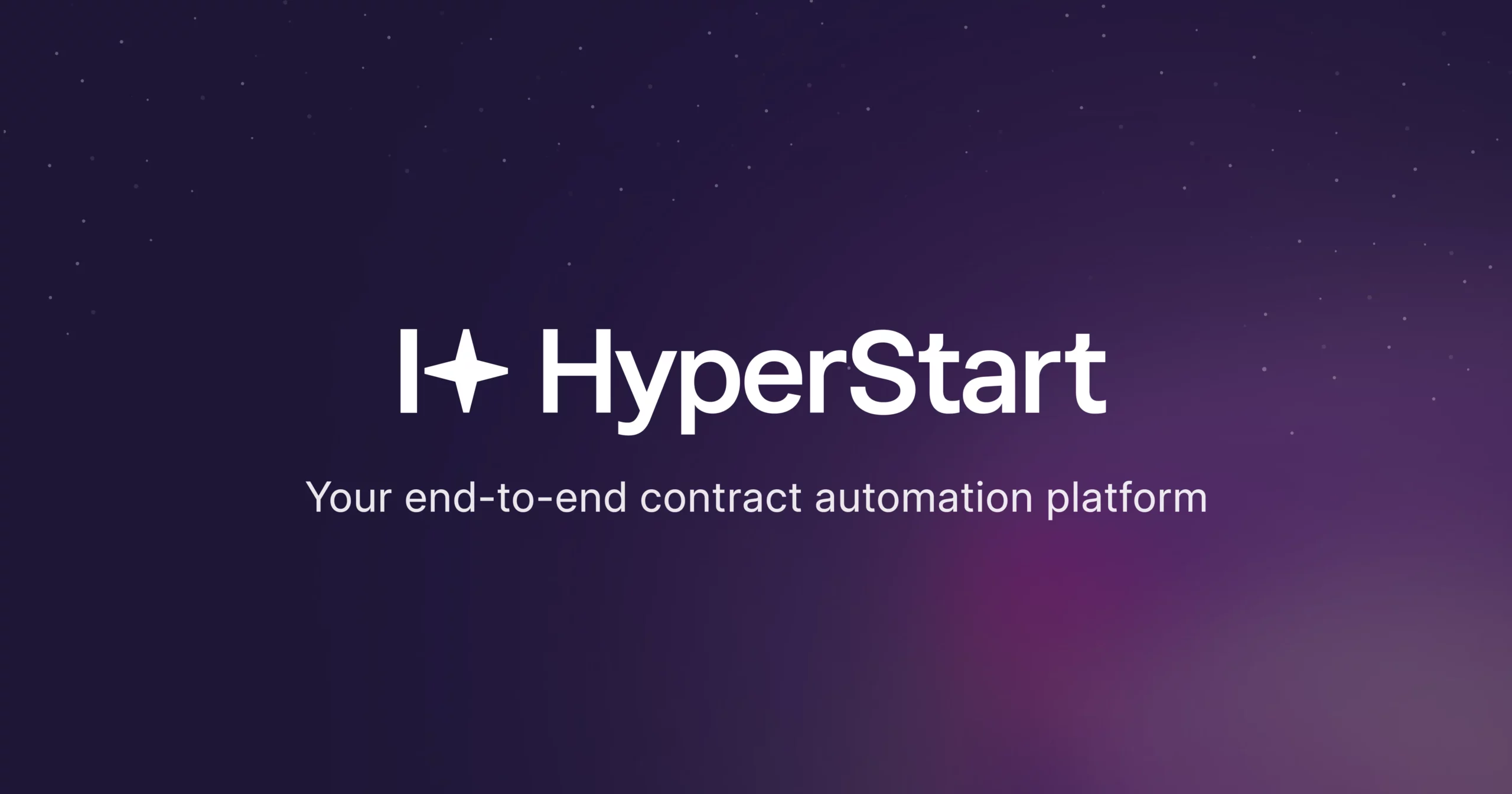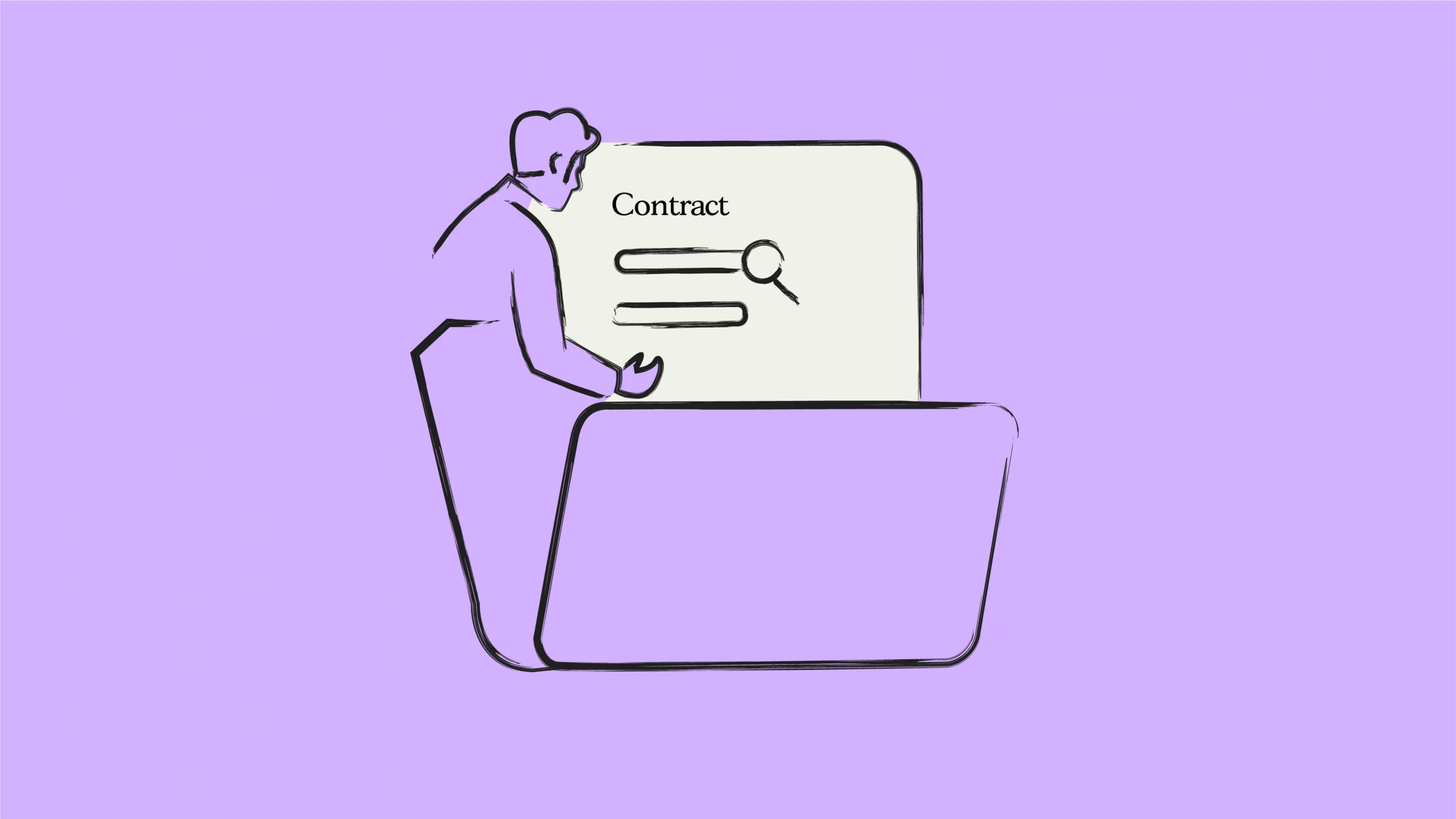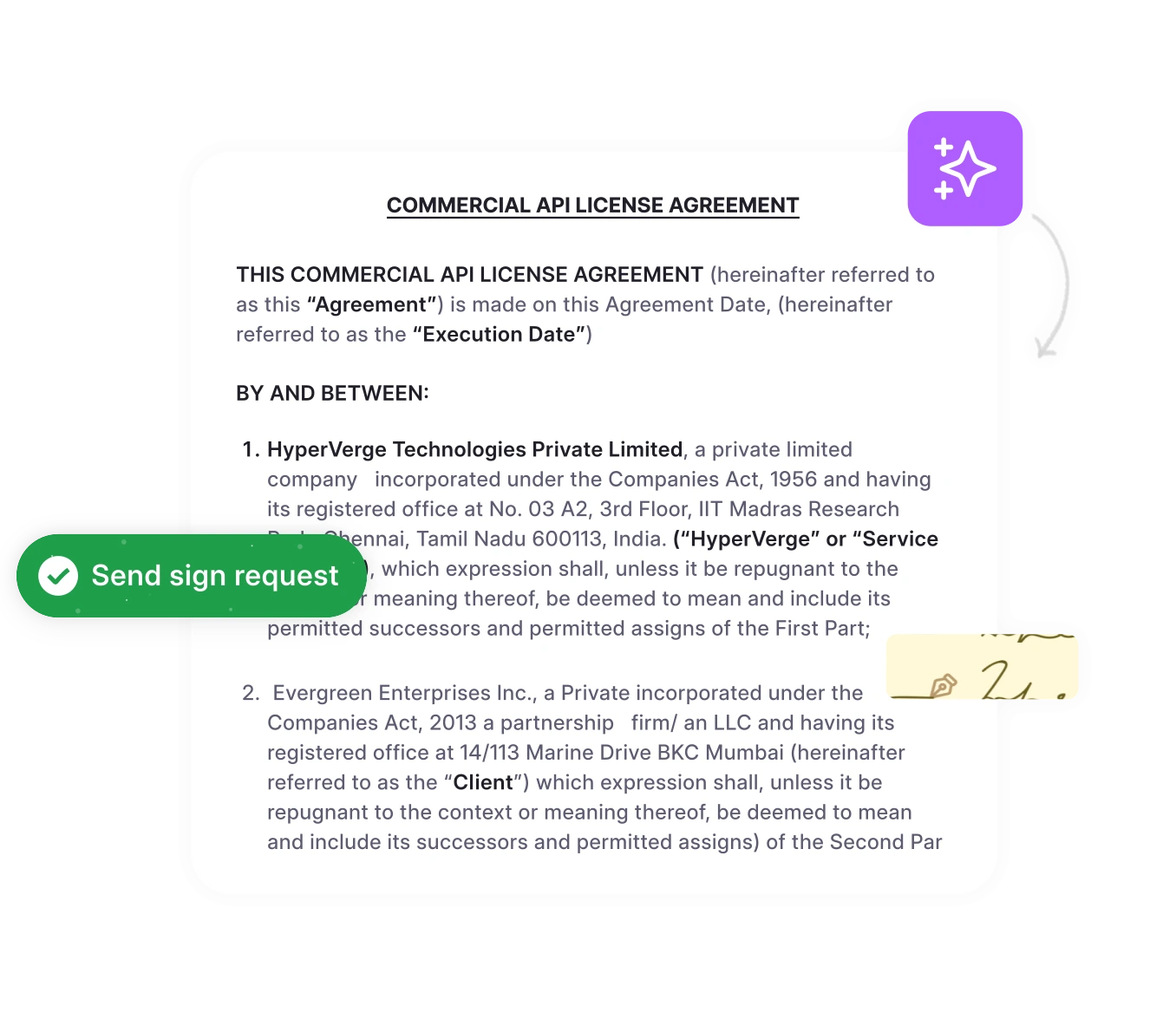Humans and machines make a great team for better collaboration, boosted revenue, saved costs, and reduced risks. Trackado reports that “for every $1 spent on CLM tools, businesses can recover between $91 and $183 in revenue.
Contracts are like no other form of writing. Memos, articles, and books have some semblance of structure to organize, store, categorize, and retrieve. But not contracts. Besides, they’re directly linked to your business operations and relationships. According to World Commerce & Contracting Research, 80% of Contract Data Is Unstructured.
Traditional, manual contract management is no longer sufficient. With the growing complexity of contract data, a contract’s full potential is only realized when metadata is accurate, complete, structured, and visualized.
Understanding the pivotal role of CLM platforms in maintaining a single source of truth naturally leads to the foundational process that enables it: contract data migration. So, let’s explore what contract data migration entails.
What is contract data migration?
Contract data migration is the systematic transfer of existing data in digital and legacy contracts from disparate systems, folders, spreadsheets, and physical archives into a central contract management system.
The process is more than a simple technical transfer. It transforms unstructured, often chaotic data into a searchable, compliant, and strategic asset. This involves consolidating fragmented data to improve accessibility, enhance analytics into contract performance, and facilitate better decision-making within the organization. It is about transforming unstructured data into actionable assets.
Now that we’ve defined contract data migration, the crucial question arises: why is this transformative process so indispensable to legal operational efficiency? The answer lies in moving beyond mere data transfer to strategic empowerment.
Also read: A Guide to CLM Implementation
Why is contract migration important for modern legal operations teams
A CLM system offers a full spectrum of benefits, from streamlined workflows to comprehensive risk management. As reservoirs of contract intelligence, a successful contract data migration can empower you to move forward strategically without the grunt work.
1. Enabling organizations with a single source of truth
“Our commercial teams used to interface with 29 different systems. Now, followingDigitization, they interface with three. The efficiencies this generated, the opportunities it revealed, are generating a bottom-line impact of £72 million a month – a margin improvement of almost 7.5%. And there is more to achieve.”
Mature contract management processes depend on centralized access. Migrating legacy contracts to a unified platform ensures legal, finance, and sales teams operate from the same up-to-date data.
2. Empowering cross-functional teams
“Today, contracts are more than documents—they’re data. And the ability to analyze that data at scale is redefining how legal, procurement, and finance teams operate.”
Once data is centralized, teams can collaborate more efficiently, eliminating delays and bottlenecks. Deals are closed faster. Non-legal teams are empowered, not blocked
Read: CRM with Contract Management
3. Strengthening compliance and risk management
Implementing a CLM improves compliance rates by 25%. Implementing a CLM improves compliance rates by 25%. During migration, teams can surface hidden obligations, expired contract terms, and non-compliant clauses. This reduces exposure and ensures better alignment with compliance requirements. Risks are proactively averted.
4. Redeeming legal billable hours
“The beehive will make more money because of AI, but it will still be a beehive.”
When you’ve eliminated routine contract administration tasks from your calendar, your work is less tedious and more focused. Legal time shifts from firefighting to strategic advising. You have enough room to breathe and flourish at things that you are head and shoulders above the rest.
5. Strategic importance
Leadership teams have the intel to make better decisions. Obligations are never left to chance, so you’re playing the long game well.
A firm saved 1.4 million sheets of paper—a CO₂ reduction of 7,787 kg—using digital signatures.
While the strategic advantages and transformative potential of contract data migration are clear, the path to a smooth transition is not without its challenges. Understanding the key benefits also means recognizing the common pitfalls that can derail even the most well-intentioned projects.
Let’s delve into the migration mistakes to avoid.
Migration mistakes to avoid
A staggering 83% of data migration projects either fail outright or substantially exceed their planned timing and budget. Challenges usually stem from AI over-promise, implementation delays, cost overruns, and compatibility issues.
Key considerations on what AI can do
- Contract types: Tailor migration for high-volume, lower complexity contracts like lease agreements.
- Clause complexity: Pay special attention to clauses you have a standard position on and how they would play out in different scenarios.
- Access and permissions: Make sure you determine user access based on roles.
- Compliance protocols: Update contracts, workflows, and standard operating procedures for jurisdictional and organizational compliance norms.
- Data security: Prioritize robust encryption and user authentication mechanisms so contract data stays safe across the lifecycle.
Knowing the common mistakes is the first step; the next is equipping yourself with the strategies to navigate them successfully.
Unlock Full Contract Potential Today
Discover how smart contract management migration can transform your legal operations and boost efficiency.
Book a DemoHere’s a detailed look at how to avoid these pitfalls and ensure your contract data migration is a success.
How to avoid pitfalls
- The ‘lift-and-shift’ trap
Treating contract data migration as a technical, box-checking IT chore won’t cut it. It has to be done with purpose to truly transform your contracts.
- Ignoring data quality issues
Migrating outdated, incomplete, or inconsistent data into a CLM system can cripple adoption and digital transformation. The new system is only as smart as the data you feed it.
- Delaying governance
Advanced permission controls, access policies, metadata properties, clause libraries, and workflow approval automations must be defined before migration, not after. Or, you’ll face rework later.
- Due diligence
Before you decide, do your homework. Get references of active or long-time customers.
Having outlined the crucial steps to avoid common migration pitfalls, it’s essential to understand the underlying philosophy that drives a truly successful transformation. At HyperStart, we approach contract migration with a distinct mandate, guided by insights from legal leaders in the field.
The Hyperstart Mandate
As Pablo Blanco, GC at Repsol, puts it, “Being up-to-date is not that difficult. But becoming obsolete is really easy.”
We view contract migration as a pivotal step in staying relevant. It’s not about just moving contracts—it’s about unlocking insights, ensuring compliance, and enhancing business operations. This includes transitioning from physical to digital contracts, ensuring a smooth migration process for legal teams, meeting compliance requirements, and implementing advanced permission controls.
What we aim for:
- Intelligence for contract success: Organizing contracts through automated extraction, smart tagging, and creating structured data that is searchable.
- Clarity and simplicity: Streamlining contract administration tasks.
- Flexibility and adaptability: Ensuring the system can evolve with your needs.
- Speed and efficiency: Accelerating contract analysis and management.
- Communication and collaboration: Facilitating teamwork through access controls.
With a clear understanding of our aims, let’s now provide you with a practical roadmap. This comprehensive guide outlines the phases and best practices for a successful contract data migration, ensuring you achieve your strategic objectives.
Your guide to a successful migration (+ best practices)
Phase 1: Plan your migration strategy
Define your North Star. This could be to automate tracking of obligations for high-volume contracts or recognize revenue leaks, and so on. Then go on to create a comprehensive audit inventory of your agreements, the contract value, key metadata they contain, and where they are located. Align with stakeholders from the outset so no one has to play catch-up later.
Start small and iterate. Learn from smaller migrations of a few contracts before you scale across the organization.
How we do it:
- Pilot with small volumes of a few contract types
- Train and test AI on standard and out-of-box properties
- Standardize and scale with you on all the contracts you choose to migrate
Read how LeadSquares streamlines its contracts today.
Once your migration strategy is meticulously planned, the next critical step is selecting the right technology partner. Phase 2 focuses on choosing an intelligent CLM platform that aligns with your strategic goals and can deliver on the promise of efficient contract management.
Phase 2: Choose your intelligent CLM platform
Prioritizing extractive artificial intelligence and automation capabilities can help you make sense of your contracts and what’s in them. Also, ensure seamless connection with existing business systems (CRM, ERP) and that your CLM grows with your business.
Don’t just move everything. Move what’s valuable. Make sure your CLM will help you cleanse and deduplicate contracts.
For instance, when you’re migrating contracts into your HyperStart repository, it automatically filters them on 3 parameters:
- It is a contract: so bills and other documents don’t clutter your workspace
- It is executed: so it is legally enforceable
- It is not a duplicate: so you work efficiently
With the right CLM platform chosen, the journey then moves to the core of transforming your contract data. Phase 3 dives into the intelligent data extraction and structuring that truly unlocks the strategic value hidden within your agreements.
Phase 3: Intelligent data extraction & structuring
Many CLMs are keen on developing GenAI capabilities. Physical contracts are not the kind of documents that can significantly benefit from them. At HyperStart, for instance, we’re focused on identifying and extracting useful metadata like contractual obligations, key clauses, dates, and deadlines. Our natural language processing reads, understands, and interprets relevant contracts and metadata. We have a robust metadata framework that makes your contract organization, search, retrieval, and tracking more efficient and useful.
Focus on actionable metadata beyond standard contract management reporting. If users are forced to see what doesn’t align with your KPIs, you’re not likely to use them.
Our OCR in contract management can handle both digital and scanned PDF contracts. Besides, your dashboards are:
- Self-serve so you tailor them perfectly
- Visual to paint a bigger picture
- Actionable for decision makers
- Real time for dynamic insight
- Drillable to understand contract trends
As we conclude this guide, a crucial consideration remains. The journey of contract data migration, while fraught with potential pitfalls, also presents an unparalleled opportunity for substantial returns. Understanding this risk and reward paradox is key to your ultimate success.
Final word
If you’re still reading, then one thing is probably still niggling at the back of your mind: the risk and reward paradox. While an alarming 83% of data migration projects fail or overshoot, the implementation of the software promises a 300% to 450% return on investment. The success hinges on the new CLM system you pick and how you’re aligned.











